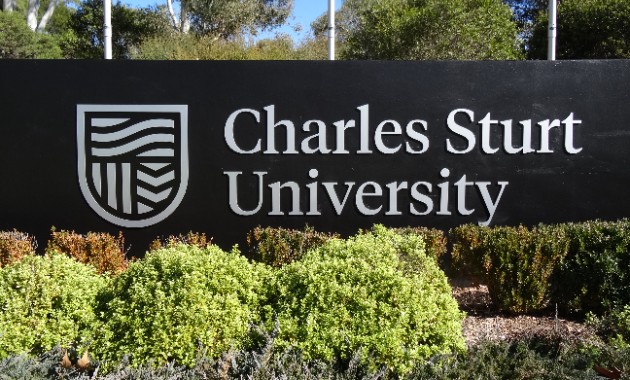Eight young researchers took part in this year's Summer Scholars Day, working with senior researchers on Charles Sturt University's Albury-Wodonga and Wagga Wagga Campuses. The students commenced their projects in December 1999.
As a finale to the 2000 Summer Scholars Program, the researchers will present project findings to CSU's Deputy Vice-Chancellor (Academic), Professor Kath Bowmer, on Thursday 3 February at the University's Thurgoona Campus.
The program, funded by CSU, was established to help young researchers develop the practical investigative and communication skills they will need during their research careers.
Project summaries:
- The recently-rejuvenated Wonga Wetlands are developing the conditions needed for toxic blue-green algal blooms, according to a study carried out by environmental researcher Isla Croft. Over the past month, Isla has compared water samples from the Wonga Wetlands, Ryan's Lagoon (next to the Murray River) and the new wetlands on CSU's Thurgoona Campus for various algae and minerals. Wonga Wetlands receives treated effluent from Albury's new sewage treatment works. According to Isla, the Wonga samples had high levels of nitrogen and phosphorus, due to sewage inflows, conditions which are conducive to algal blooms. The water samples from Ryans Lagoon and the Thurgoona wetlands had lower mineral levels, which could be attributed to very different land management regimes around these sites.
- Employing a process made famous in television shows about forensic science, budding researcher Sandra Oliver is using DNA fingerprinting to help improve disease resistance in canola crops. Sandra, from CSU's Wagga Wagga Campus, is studying the genetic make-up of Australian canola varieties to better understand their resistance to the crop's main fungal threat, blackleg. The research will aid in breeding better blackleg-resistant canola that could use resistant genes from different sources, so reducing the chance of building up strains of blackleg that could infect currently resistant crops.
- The effectiveness of the tiny rice snail, Isidorella newsombi, for use in monitoring pesticide build-up in the environment was the topic investigated by environmental scientist, Stefan Hansen. Leading from research conducted last year, where it was found that the insecticide chlorpyrifos was concentrated up to 2000 times in the snail after it had been added to water, Stefan tested the concentration of 11 other pesticides in the snails during his Summer Scholarship. He also studied the amount of chlorpyrifos transferred between water and soil sediment.
- Annual ryegrass is a serious weed for Australian cereal crops and weed researcher Donna Seberry is searching for a biological control for the pest grass. Her work has gained greater importance since CSU reported the world's first herbicide resistance in ryegrass in Victoria in 1998. A type of the soil bacteria Pseudomonas is known to cause disease on ryegrass in America, and Donna is now searching for a similar bacteria in soils around Wagga. For her summer research project, she checked Pseudomonas bacteria previously collected around Wagga as well as recently collected bacteria for virulence on ryegrass. She also checked if these bacteria also infected wheat plants.
- Ever wondered if there is some scientific fact behind the miraculous medicinal qualities claimed in advertising for many natural remedies? Biomedical researcher Tracey Ryan spent her summer exploring the effectiveness of three essential oils, three herbal teas, raspberry cordial and natural raspberry juice in affecting the growth of five common disease-causing bacteria, one yeast and a fungus. Initial results indicate that the three raspberry-based products had little influence on the rapid growth of these micorganisms.
- Selecting sheep with the best fleecy genes is the aim of Gordon Refshauge's Summer Scholar project. In ground-breaking research, Gordon is seeking to match recently discovered genes that affect clean fleece weight, the most economic trait of wool production, with the fleece weights of a flock of ewes at CSU's Wagga Wagga Campus. It is hoped that stud rams could be selected according to genetic markers verified by this research.
- Agricultural scientist Erica Martin has tested a recently developed genetic engineering technique for isolating marker genes in barley crops. The identified genes include those related to better malting qualities and stripe and leaf rust. The information will be used as part of research efforts to map the gene structure of barley to help breed better crops.
- The greatest threat to Australia's growing canola industry is blackleg, a disease caused by the fungus Leptospaeria maculans. CSU crop researcher Andrew Albiston is assessing different strains of the fungus for their level of threat they pose to canola crops. He hopes to isolate the genes that pass on disease virulence to new generations of the fungus. Identifying these genes will help breed canola with better resistance to blackleg.





Social
Explore the world of social